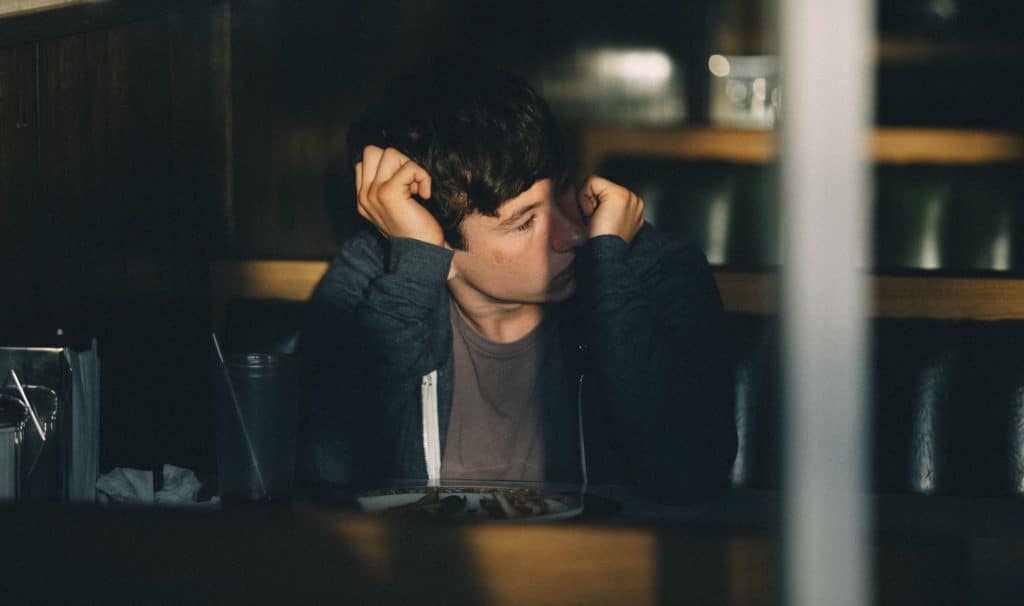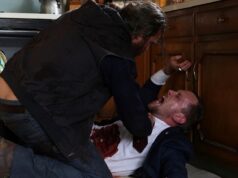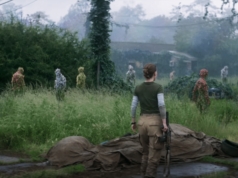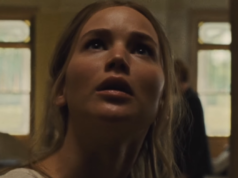With The Killing of a Sacred Deer, Yorgos Lanthimos crafts a daring, nerve-racking and shocking story of revenge that benefits from fantastic performances
The Killing of a Sacred Deer (2017)
Directed by Yorgos Lanthimos. Written by Yorgos Lanthimos and Efthymis Filippou. Starring Colin Farrell, Nicole Kidman, Barry Keoghan, Raffey Cassidy, Sunny Suljic, Alicia Silverstone and Bill Camp.
Greek director Yorgos Lanthimos has a very distinctive and recognizable voice as a filmmaker. His works are what we would normally call “weird,” peopled with bizarre characters that look eerily unemotional and don’t exactly abide by our norms of social conduct. Like in his previous films Dogtooth (2009) and The Lobster (2015), it is oddly amusing to see people who could be easily mistaken for robots (or grown-up children) in situations that would befit the strangest episodes of The Twilight Zone. But more fascinating is how Lanthimos builds a suffocating sense of apprehension and dread from his ideas, this time crafting an anguishing and shocking story of revenge that benefits from some fantastic performances.
Written by Lanthimos and his usual collaborator Efthymis Filippou, The Killing of a Sacred Deer (whose title is an allusion to the ancient Greek tragedy Iphigenia in Aulis by Euripides, which gets mentioned at some point in the film) follows cardiothoracic surgeon Steven Murphy (Colin Farrell), married to ophthalmologist Anna (Nicole Kidman) and father of two kids, who has been in secret contact with a teenage boy linked to his past. The boy, Martin (Barry Keoghan), seems at first to admire Steven’s perfect family, but it doesn’t take long for his presence to foreshadow a tragic punishment that will befall the entire family and push Steven towards a dreadful decision that he needs to make so he can atone for his sins.
Beginning the film with the scene of a heart surgery to the sound of Franz Schubert, Lanthimos sets the tone right away and builds an unsettling atmosphere with a cold palette, sacred music and the use of cacophonous instruments especially whenever Martin appears. It is clear that he wants to make us feel uncomfortable without us knowing exactly why. His camera glides and travels through long corridors following the characters, and he also employs wide-angle lenses that distort rooms and zooms that enhance this general sense of weirdness. In certain moments, he even comes up with creepy shots in ordinary circumstances, like when we see Anna flossing her teeth in the bathroom or a fish being dilacerated.
The fact that the plot, the characters and the dialogue are so unconventional (to say the least) also contributes to keeping us on edge. Steven is an awkward character who bears an undeniable similarity to the one Farrell played in The Lobster, speaking with a weirdly unemotional, almost robotic voice. He and Anna are in fact an absurdly analytical couple, behaving so differently from “normal” people that it can be hilarious to see them act out their general anesthesia sexual fantasy or talk so naturally about their daughter’s menstruation at a party. It is as if The Killing of a Sacred Deer is some sort of algorithm created by a robot who could never understand how bizarre it is that Steven once masturbated his own father as a kid out of curiosity.
As Martin behaves more and more like a stalker, appearing everywhere to the Murphys, and as we witness creepy conversations about armpit hair and Steven’s “lovely hands,” the tension grows quickly. A discreet close-up shows that Martin and Steven’s son Bob (Sunny Suljic) wear the same pair of shoes, and when Bob is seen from a high angle collapsing on the floor of the hospital, we hear nervous strings that increase the suspense. Things are made more unsettling by the sight of long distorted corridors and how Lanthimos usually keeps the camera too close to the floor or to the ceiling. It is only when those phlegmatic characters lose control and Steven succumbs to his mental despair that we realize they have reached their limit.
The tour-de-force performances couldn’t be more in tune with the material. I love, for instance, Kidman’s cold puzzlement when Anna is asked how she is feeling and replies “I’m fine, what do you mean?” even though her child is in the hospital suffering from an unidentified condition. Meanwhile, Keoghan composes Martin as a seemingly autistic and fragile kid who could be just looking for a new father but later reveals a merciless side. And if the nerve-racking scene full of close-ups in which he explains his motivations to Anna is disturbing enough, take a look at when Steven and Anna’s daughter Kim (Raffey Cassidy) asks Bob if she can have his MP3 player after he is dead. In a few years, this will be remembered as classic Lanthimos.
Like a bizarre combination of Fatal Attraction (1987) and Teorema (1968), The Killing of a Sacred Deer reaches a shocking climax that doesn’t care about explaining the causes of the “curse” — which, when you think about it, doesn’t matter. What matters is the price that Steven must pay to have a perfect barbecue in that perfect house again, or at least something close to that. The ending may not be for everyone’s stomach, but it is daring, brutal and extremely revealing about human nature. You just have to see it for yourself.





